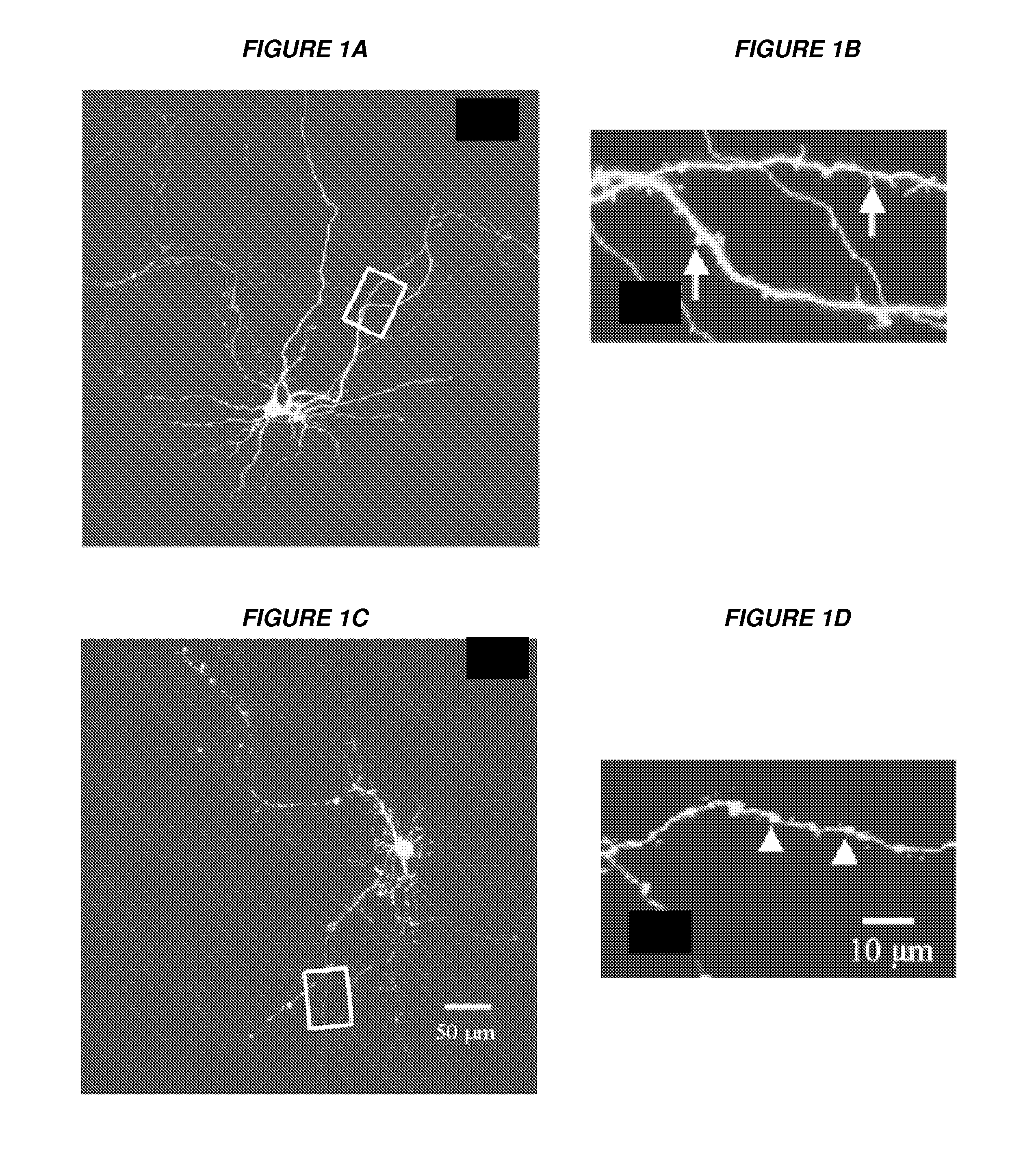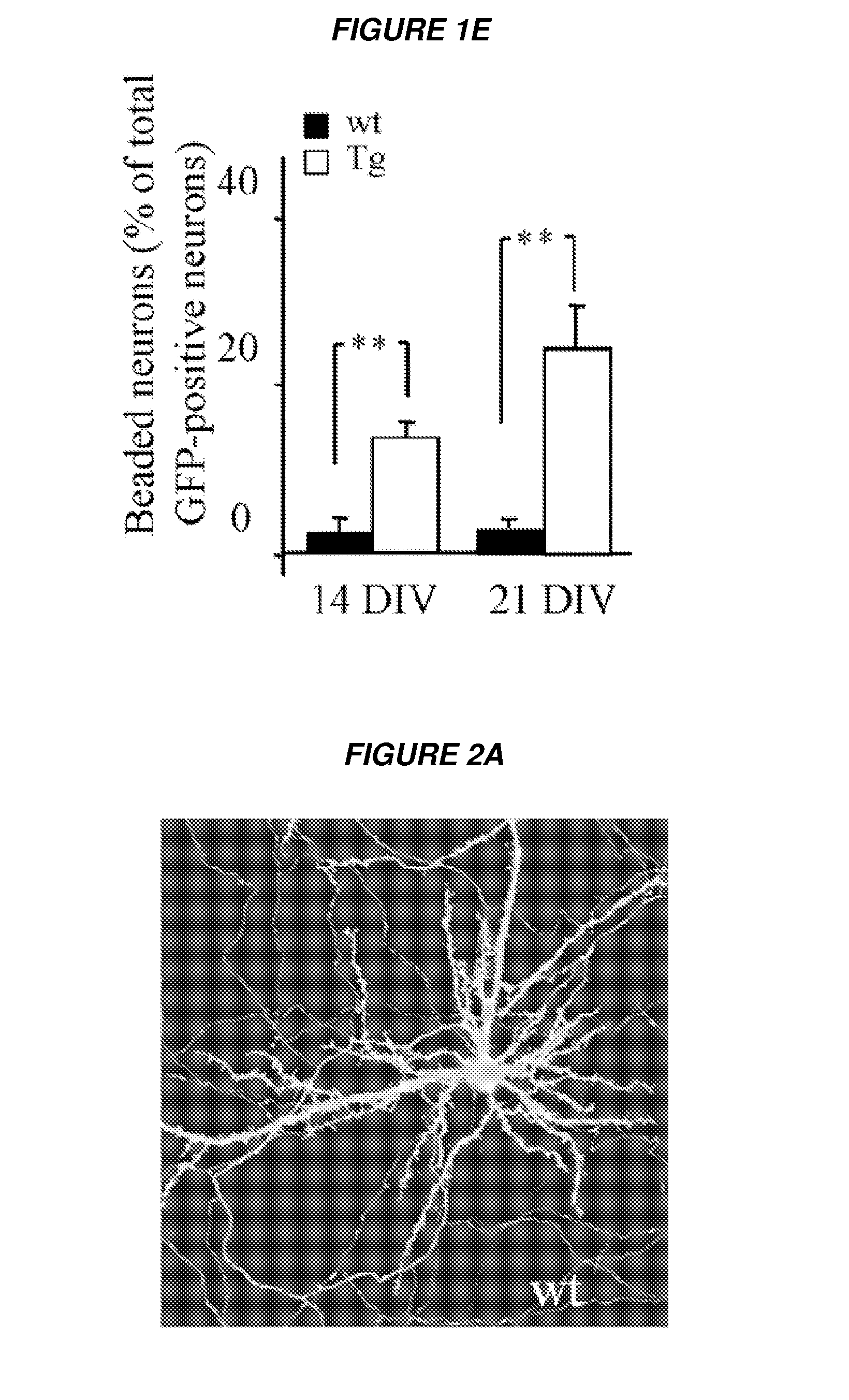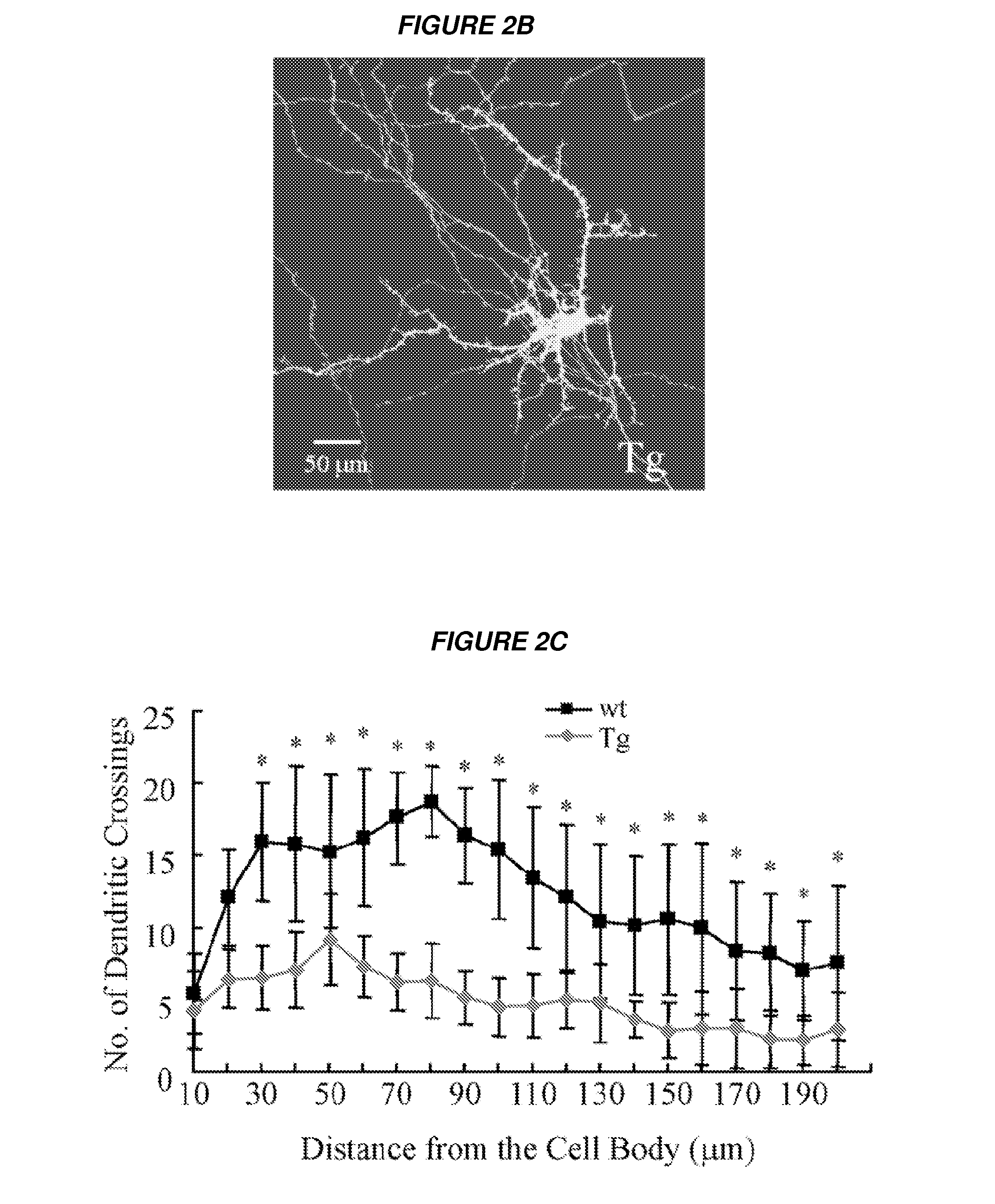Methods to inhibit neurodegeneration
- Summary
- Abstract
- Description
- Claims
- Application Information
AI Technical Summary
Benefits of technology
Problems solved by technology
Method used
Image
Examples
example 1
Abnormal Morphologies in Neurons from Tg2576 Cultures
[0239]Neuritic abnormalities have been seen surrounding plaques in human AD and in aged APP-overexpressing mouse models of Alzheimer's Disease (AD), but studying these lesions is difficult because they are distributed apparently randomly throughout the cortical mantle, occur only in aged animals, and the location of new lesions cannot be predicted. Presented herein is a tractable model for neuronal abnormalities associated with AD. It was first sought to examine whether mature primary neurons from transgenic embryos expressing APP with the familial Swedish mutation (Tg2576 line) develop any of the morphological phenotypes associated with neurodegeneration in the intact (aged) transgenic brain and in human AD, including dendritic spine loss, diminished dendritic complexity, and neuritic dystrophies. To assess neuronal morphology, cultured neurons were transfected with GFP to label individual neurons. During the course of 21 days in...
example 2
Conditioned Media (CM) from Tg Culture Contains Oligomeric Aβ and Induces Elevation of [Ca2+]i
[0241]Primary cortical neurons derived from Tg embryos at 14 DIV produced high levels of two major types of human Aβ peptides, Aβ40 and Aβ42; the concentration of Aβ40 was 16 ng / ml and of Aβ42 was 1.2 ng / ml as determined by ELISA (FIGS. 4A and 4B). Moreover, Western blot analysis of immunoprecipitation revealed the presence of readily detectable SDS-stable small oligomers in CM of Tg cultures at 14 DIV, similar to those reported to be synaptotoxic (Shankar et al., 2008) (FIG. 4C).
[0242]Neurites in the region near senile plaques have been recently observed to contain high [Ca2+]i (Kuchibhotla et al., 2008). To examine whether Aβ is capable of inducing an increase in [Ca2+]i, the effect of Tg neuronal culture CM on calcium homeostasis of wild-type neurons was assessed. Wild-type cortical neurons were cultured in standard NB / B27 serum-free medium, and, at 14 DIV, the medium was replaced with ...
example 3
CaN-NFATc4-Aberrant Nuclear Localization in Neurons from Tg Cultures and Human AD Postmortem Brain
[0243]Because Aβ in TgCM induces elevated [Ca2+]i in cultured neurons and Hyman B T et al. have previously shown that neurites with abnormal morphologies in both APP / PS1 and APP transgenic mice were strongly associated with [Ca2+]i overload (Kuchibhotla et al., 2008), it was sought to examine Ca2+-mediated pathways as the link between exposure to Aβ and a neurodegenerative phenotype. Because CaN is the most calcium-sensitive protein phosphatase in the brain (Klee et al., 1979), CaN activity was examined in neurons from Tg cultures to determine if it is upregulated. NFATc4, the nuclear factor of activated T cells, is a well known CaN substrate. Activation of the predominant neuronal NFATc4 isoform, which is abundantly expressed in cortical neurons, can be determined by its nuclear translocation after CaN-mediated dephosphorylation. Cultured neurons at 14 DIV were stained with an antibody...
PUM
| Property | Measurement | Unit |
|---|---|---|
| Fraction | aaaaa | aaaaa |
| Time | aaaaa | aaaaa |
| Time | aaaaa | aaaaa |
Abstract
Description
Claims
Application Information
 Login to View More
Login to View More - R&D
- Intellectual Property
- Life Sciences
- Materials
- Tech Scout
- Unparalleled Data Quality
- Higher Quality Content
- 60% Fewer Hallucinations
Browse by: Latest US Patents, China's latest patents, Technical Efficacy Thesaurus, Application Domain, Technology Topic, Popular Technical Reports.
© 2025 PatSnap. All rights reserved.Legal|Privacy policy|Modern Slavery Act Transparency Statement|Sitemap|About US| Contact US: help@patsnap.com



